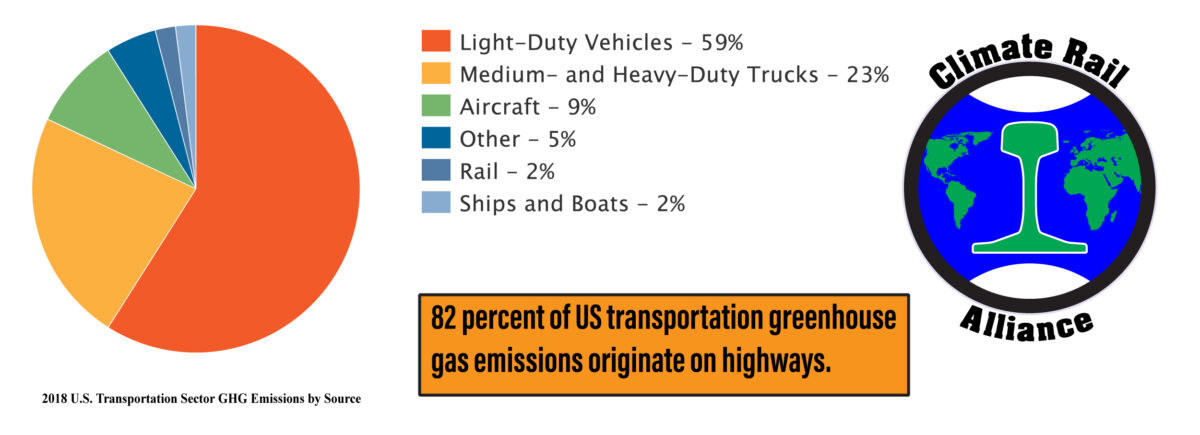Public transportation is not about moving vehicles any more than carpentry is about operating a hammer or plumbing is about operating a wrench.
The architect develops a plan that integrates all of the elements into a functional house. Carpenters work from the plan for the finished product, ensuring that their work produces their piece of the overall unit. The plumber develops a system that is intended to move the content of pipes from where it is to where it is needed, as shown in the plan.
When the two trades work on the same project, the carpenter’s work accommodates what the plumber needs. The plumber accommodates what is possible in carpentry. They both work to produce the well-functioning house that the architect designed.
Public transportation in the US typically doesn’t work that way. There is an agency responsible for operating specified trains, buses, light rail trains, or streetcars on specified routes. There is another agency responsible for other routes. Sometimes, several transit routes, operated by separate agencies, share the same street or track. Each agency generally manages its part of the system in isolation. They are like a carpenter working without an overall plan, responsible for building ‘a house,’ as is convenient for the carpenter and separately from the other trades. Meanwhile, the plumber is working, likewise without an overall plan, as is convenient for the plumber, separate from the other trades. When the house is complete, the new owner wonders why anyone would put a perfectly useless toilet in the front entryway and a shower in the kitchen.
This is a network map of the Swiss standard rail (not streetcars) system showing the various services and their schedule times at stations. 
Close attention is paid to the detail and discipline of running trains on time to ensure that these connections are made. Take note of the frequency. The least frequent service is hourly. Many station combinations have trains two or more times per hour.
A Swiss colleague developed a system that notifies a train engineer if the train is more than seven seconds (!) ahead or behind schedule and notifies the dispatcher as well. The information is acted upon promptly. Swiss trains are on time 93 percent and make connections as scheduled 99.1%. The standard that the US strives to achieve – (and fails) – is 80 percent (which is about equal to the worst service in Europe). Amtrak generally won’t sell a ticket with a connection of less than three hours and sometimes, taking the connecting train the next day is recommended.
However, the precision in Switzerland is not limited to trains. In Switzerland, public transportation is integrated, regardless of mode. Streetcars, light rail, and buses are scheduled with the same precision. Even the aerial cable tramways are connected to other transportation by schedule.
In the US, do you want to find out when a King County Metro bus runs? Go to the Metro website. Want to find out about Pierce transit? That’s the Pierce Transit website. Community Transit, Whatcom Transit, Everett Transit? You guessed it. Paper timetables for visitors, like maybe at the airport or train station…you guessed it. There might be some for routes (or the route) stopping at the station. Don’t look for information beyond that first layer, because it’s not there.
This is the Swiss national timetable. 
Most people won’t need the whole thing in a compendium like this, but for those who need it, it’s there – the trains, buses, streetcars, aerial trams, etc. We have nothing like it, and not even a website to consolidate the information in this manner. Amtrak used to have a national timetable (for just Amtrak’s trains, of course), but it was discontinued.
Going to Centralia from Seattle? Amtrak Cascades will take you there. Going to the outlet mall in Centralia? Well…get on a train in Seattle and figure it out when you get to Centralia. The Amtrak website has a reference page for the station…if you know where to look. When you get to that page, you can click a link to the transit agency on the “Getting Around” page. But, the link goes to the home page of Washington State Transit Association. That site has no information about riding a bus in Centralia, but you can blow hours looking at links that have the appearance of maybe being relevant.
The good news is that the linked Amtrak page gives the name of the transit agency: Twin Transit. Hooray. Let’s go look. Is there anything useful? Oh, yes, a link to a system map. Oh…well…uh…Where is the Centralia Amtrak Station? It helps to know where it is because if you don’t already know where it is, you’ll have a hard time finding it. Let’s slip over to Google maps and turn on the transit layer so we can see the train station and the bus stops. Oops, the bus routes in Centralia don’t show on Google maps, but we know where the Amtrak station is now, so we know roughly where to look on the transit map. Uh oh. While we’re here, we’d better figure about where the outlet mall is so that we can find it.
Back to the transit map. There are two bus routes stopping at the Amtrak Station. One of them goes to the general area of the outlet mall. That’s ok in nice weather if there is no product of shopping to carry. There is another route that looks like it passes the mall. It appears that there is a connection. How often? Nothing on the map tells you how often the buses run, just how many minutes between timing points…or is that how many minutes past the hour that the hourly bus comes? Either way, the information implies that the buses run hourly. At the connection point to the mall, once you figure it out, the schedules show that there is a two minute connection. Is that one way? Is it two minutes wait in one direction and 58 minutes wait in the other? Don’t know.
Adding another layer of the problem, we’re in Auburn, not Seattle. How do we get to the Amtrak train? For that, we need to look at King County Metro and Sound Transit. Metro has buses…that take us north. We want to go south. Hey! There are Sounder commuter trains on the same track as Amtrak. Amtrak doesn’t stop, but Sounder does. We can change in Tacoma. Of course, that now requires looking at Sounder schedules, then going back to the Amtrak website. Oh…they don’t…really…connect. Sounder trains run when Sounder wants to run trains. Amtrak trains operate when Amtrak wants to run trains. The bus company in Centralia runs buses when it wants to run buses. Each operates its vehicles as is convenient for them. If you want to be a passenger, figure it out! If you merely want to get to the outlet mall in Centralia…
Ugh! Let’s just drive.
Public transportation is too important to be operated this way.
Rail transportation is too important to be operated this way.
TAW

